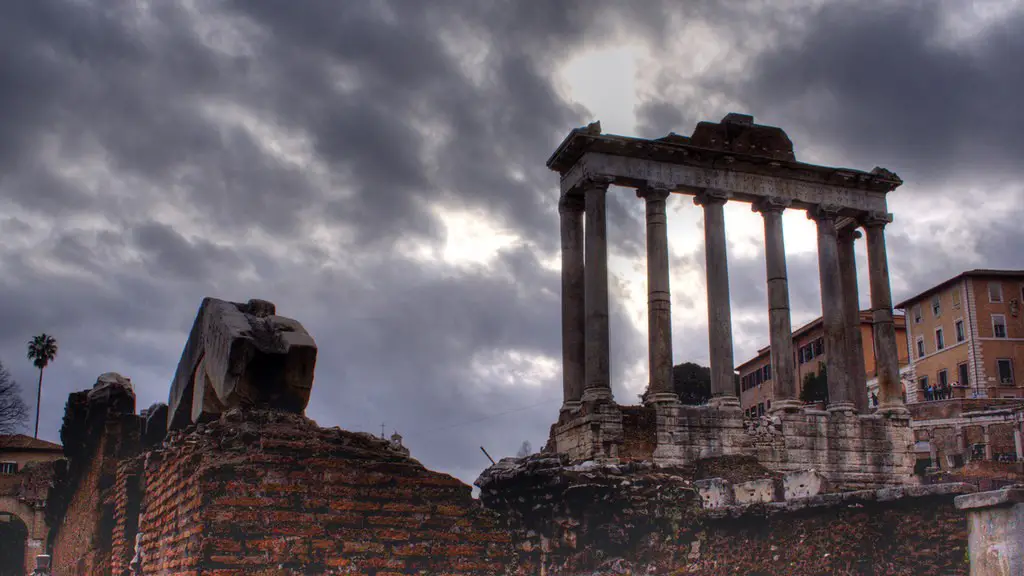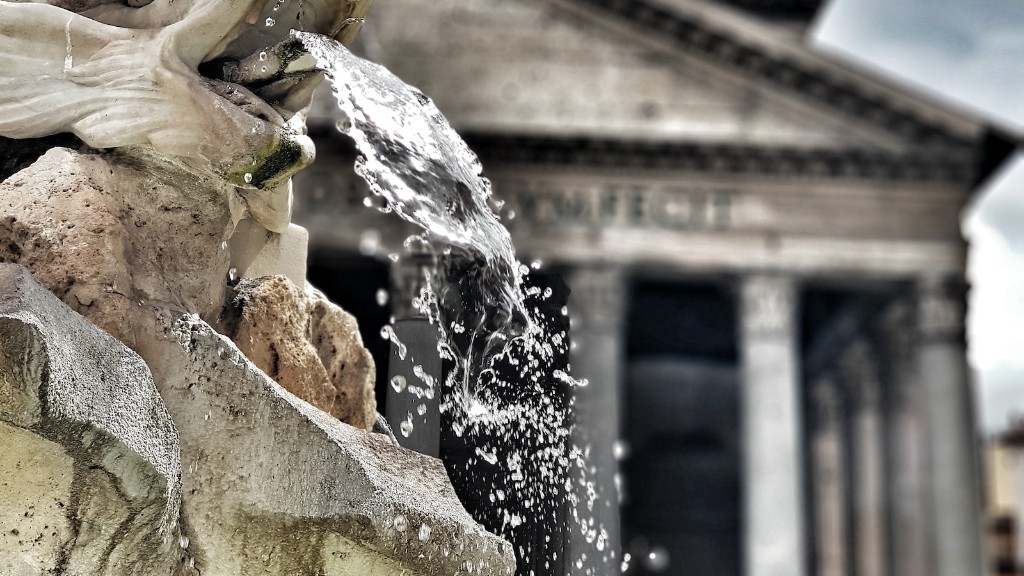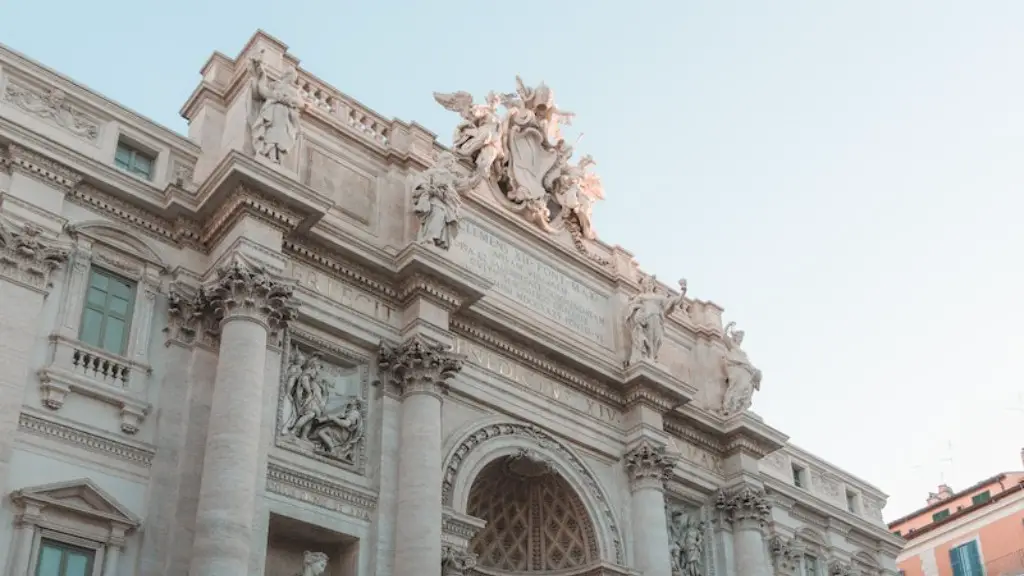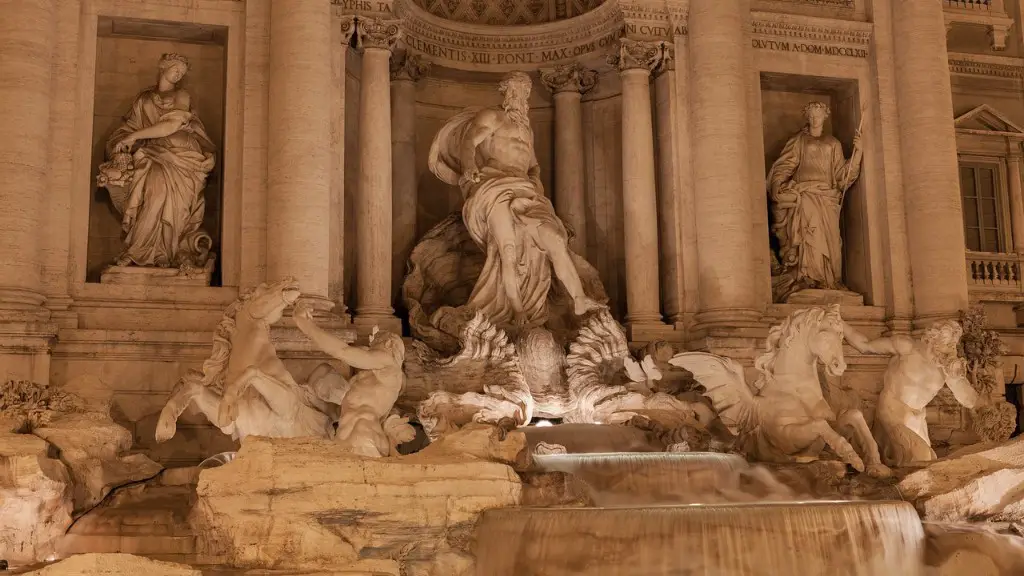History Of The Colosseum
The Colosseum, also known as the Flavian Amphitheatre, is a historic structure located in Rome, Italy. The Colosseum was constructed under the rule of the Flavian dynasty between 72-80 A.D. Emperor Vespasian of the Flavian dynasty commissioned the Colosseum as a gift to the Roman public. The amphitheatre was designed to be a place where people of Rome could come to watch public performances, like gladiatorial games and other types of spectacles.
The Colosseum is commonly referred to as one of the greatest surviving feat of Roman engineering and architecture. It had a capacity of 50,000 spectators, situated in a rectangular floorplan around the arena, with four tiers of seats made from travertine stone. It is estimated that the construction of the Colosseum took approximately 10 years to complete and it has withstood the test of time for nearly two millennia.
Importance Of The Colosseum Within Ancient Rome
The Colosseum was a symbol of the wealth, power, and grandeur of the Roman Empire. It was a means of entertainment and a place to express Rome’s dominance over every subject. It was a way of keeping the public in line and ensuring compliance with Roman law. By using public entertainment and propaganda, the Roman’s were able to control their public and their subjects. And the Colosseum was the bridge to romance between the imperial house and its people.
The Colosseum was a powerful social and political tool that was used by the Roman government to consolidate its power over its people. It was the center of activity for Roman politicians and citizens alike. While the Colosseum was used for gladiatorial games, it was also used for celebrations, ceremonies and sport events. The Colosseum was an integral part of Roman life for nearly seven centuries. It was also used as a site for staging theatrical performances and religious ceremonies.
Role Of The Colosseum In Ancient Roman Entertainment
The Colosseum was the epicenter of Roman entertainment. The spectacles and games hosted at the Colosseum would draw crowds of people from all classes of society. Gladiatorial games were the most popular form of entertainment, but there were also plays, music and other types of performances that were held in the amphitheatre.
Gladiatorial games were held at the Colosseum for the entertainment of Rome’s citizens. The games brought throngs of people to the amphitheatre to watch the fights to the death between skilled gladiators. It was a form of spectator sport that was incredibly popular with the Roman people.
The Romans were also fond of plays and theatrical performances that were held in the Colosseum. They could spend a whole day in the amphitheatre and watch a range of plays and performances, from comedy to tragedy. It is believed that some plays went on for more than 10 hours.
Role Of Religion In The Colosseum
The Colosseum was also used for religious ceremonies and festivals. It was a site of pilgrimage for followers of the pagan deities, as well as a place where prayer ceremonies were held to honor the gods. One of the most important religious festivals was the Ludi Magni, which lasted for many days and consisted of a range of activities, from gladiatorial games to theatrical performances.
Roman religion was closely intertwined with the Colosseum and it was a powerful symbol of the Roman Empire’s power and dominance. The Colosseum served as a reminder of the presence of the gods in the Roman Empire, and that Rome’s citizens should follow their dictates. It was a way of conveying the message that Rome was the center of the world, and that all citizens should follow the laws of Rome.
Fall Of The Colosseum
The Colosseum began to decline in importance during the late 5th century, as the Roman Empire began to weaken. It was slowly abandoned and fell into disrepair until it was ultimately destroyed by an earthquake in 1349. After that, much of the stone blocks used to build the Colosseum was used in other construction projects in Rome. By the 16th century, the Colosseum was nearly unrecognizable and most of it had been destroyed. All that remains of the amphitheatre today are ruins and fragments.
Role Of The Colosseum In Modern Society
The Colosseum has become a symbol of the past glories of the Roman Empire. Despite its ruination, it remains an iconic symbol of the city of Rome and a popular tourist destination. Moreover, the Colosseum still continues to play an important role in the cultural and historical landscape of Rome. It is a reminder of the grandeur of the Roman Empire, its great strength and ambition.
The Colosseum is a reminder of how influential the Romans were and how strong their culture and traditions still remain today. It serves as a reminder of the power of Rome and its importance in the world. The Colosseum is a testament to the greatness of the Roman Empire and its legacy, which still remains today.
Untold History Of The Colosseum
Even though the Colosseum is most popularly known for its games and gladiatorial battles, there are aspects that are lesser known. During times of disease or famine, the amphitheatre was used as a food storage space and even provided food to citizens of Rome. The Amphitheatre was also used as an execution site and for public executions, it could even be flooded for naval battles. This made the Colosseum not only a place for entertainment but for punishment and death as well.
The Colosseum was also used for training purposes. It was used by the military to practice formation drills, as well as individual technique and skill sets. It was commonly used for mock battles, where the soldiers were able to practice their combat tactics and hone their skills.
Conclusion Of The Colosseum
The Colosseum is an iconic symbol of the Roman Empire and its greatness. Even though it has been ruined and destroyed over time, the Colosseum still stands as a reminder of the culture, history and power of the Roman Empire. It is a testament to Roman strength and ambition, and an important part of the cultural landscape of Rome. The Colosseum continues to be enjoyed by tourists from all over the world, and its legacy will live on for many years to come.



